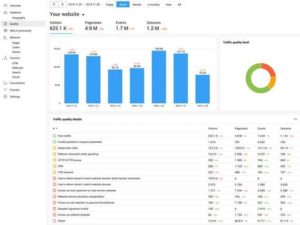The Demographic Variables That Affect a Business

There is various demographic affect businesses. Demographics are several traits used to determine the preference of a product or consumer buying behavior. Most of the companies usually identify their valuable customers via these several traits. Then, they aim consumers with similar characteristics in their promotions and advertisements. The following are some of the demographic variables that usually affect a business.
Influence of Income on Business
Income is one of the demographic variables that can affect business. The product of a company usually appeals to particular income groups. A good example is premium products like high-end clothing for women most times, appeal to women receiving high incomes. People with lower incomes are sensitive to high prices and may easily prefer buying products which are on discount. Individuals getting lower incomes have minimal disposable income. Value is a crucial aspect of every merchandise they purchase. Therefore a company may reach lower-income individuals via wholesalers and discount retailers and get higher income purchasers in unique retail shops.
Age Variables that Impact Business
Age is also a demographic variable that impacts a business. Products and services of a company a likely to appeal to a particular age group more. Youths under the age of 35 are more likely to be the first consumers to buy high-tech products such as electronic books, cell phones, and video games. The millennial generation is growing market share and improving the buying power while baby boomer is still a viable and large group as well. Attracting to baby boomers is a good strategy that can work in almost all sectors, from financial planning and automotive to healthcare and travel. Government and those in business should hire social commentators to help them in interpreting demographic and social changes to the right method to follow.
Geographic Region Variables
Individuals purchasing preferences and choices vary with a geographical region, which is also demographic. Companies that usually meet customers’ requirements and need in particular geographical sectors can earn higher profits and sales. An example, individuals mostly prefer specific drinks and food in specific markets. Companies that offer flavors products desire in different areas are often going to get profit. Those who do not provide these flavors may be at risk of losing their customers to their rivals.
Education Level as a Variable
The consumer level of education also influences the kind of purchases they make. Higher education levels are related to high household incomes, and this high income takes control of most educated consumers buying choices. The households with high incomes tend to purchase to the more nutritional dense grocery. Also, most educated parents tend to invest in the education of their children via standardized test prep, tutoring, and financial planning for college. In that case, business owners should get informed people to aid them in Interpreting demographic and social changes.
Conclusion
The best way of collecting demographic data is via market research surveys. These surveys are usually conducted by internet, mail, phone, or in person. The critical point here is taking more demographic information as much as possible. Other demographic variables may include; household size, gender, occupation, race, education, and employment status. Most marketing research personnel may consist of questions on demographics at the end of their surveys. Also, warranty cards are another method of gaining this information from their customers.








